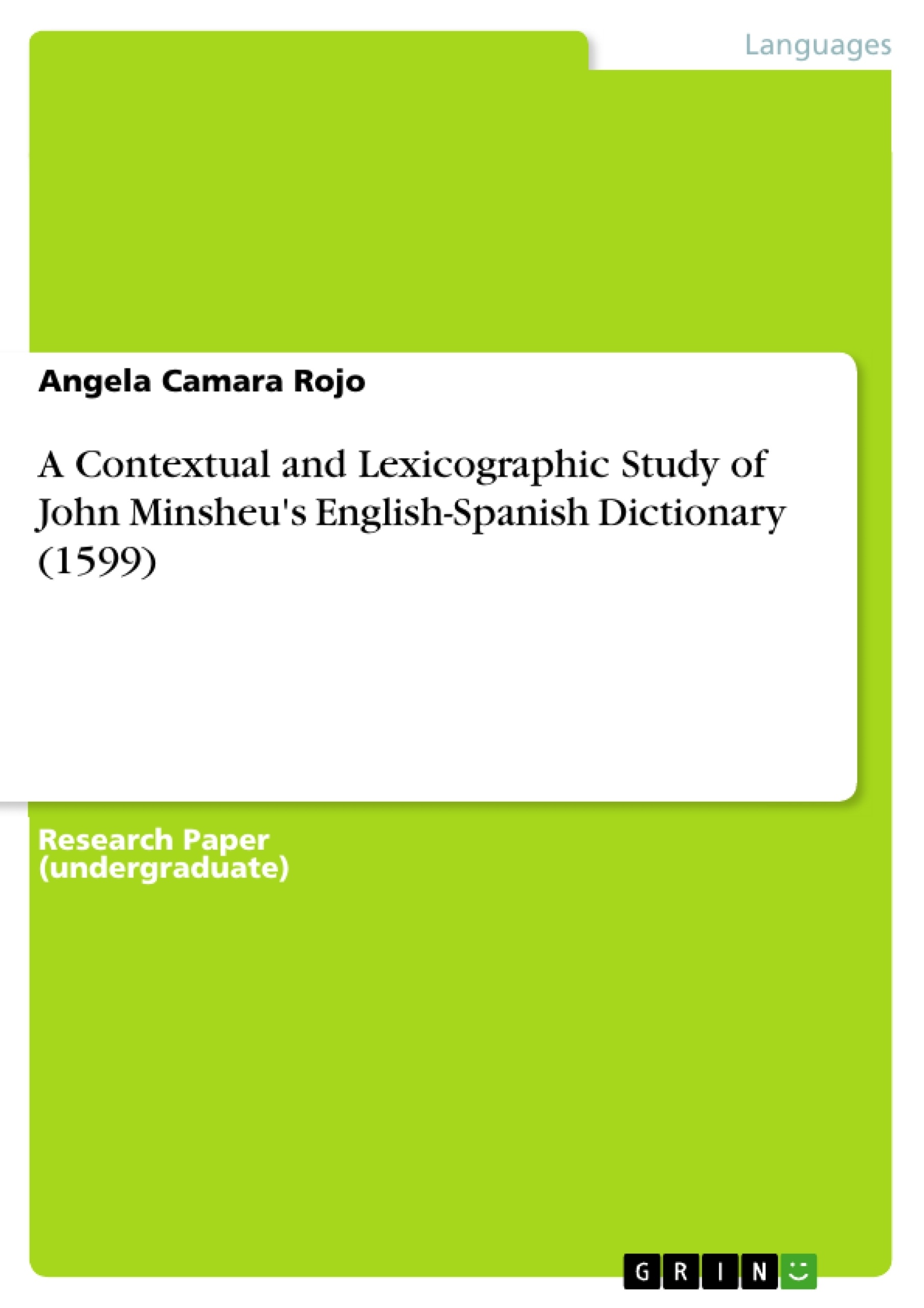This project summarizes the evolution of English and Spanish bilingual and historical lexicography in the 16th-17th century. In due course, British Hispanists such as Richard Percyvall, John Thorius and John Minsheu, moved by the interest of expanding the importance of learning Spanish, compiled grammar textbooks, dictionaries and glossaries among other materials. The relevance of Spanish language in England was inevitably connected to the external politics of Tudor England and The Spanish Empire, starting with the union of Henry VIII with Catherine of Aragon and culminating with the disastrous defeat of the Spanish Armada during the Anglo-Spanish War. Yet, the major interest of this project is the study of John Minsheu’s 1599 bilingual English-Spanish dictionary from a lexicographic and contextual perspective. Likewise, this project sheds light on other exemplary works of the English-Spanish lexicography of the period.
Inhaltsverzeichnis (Table of Contents)
- Introduction
- Historical and linguistic background
- Socio-political relations between England and Spain
- The emergence of Spanish in England
- Introduction to the life and work of John Minsheu
- A Lexicographic Study of John Minsheu's English-Spanish Dictionary
- Macrostructure of John Minsheu's English-Spanish Dictionary
- Microstructure of John Minsheu's English-Spanish Dictionary
- Conclusion
- References
Zielsetzung und Themenschwerpunkte (Objectives and Key Themes)
This project examines the evolution of English and Spanish bilingual lexicography in the 16th and 17th centuries. It explores the motivations behind this development, specifically focusing on the contributions of prominent British Hispanists like Richard Percyvall, John Thorius, and John Minsheu. Their work, driven by the growing importance of Spanish learning, included grammar textbooks, dictionaries, and glossaries. The study highlights the connection between the rise of Spanish in England and the political landscape, particularly the relationship between Tudor England and the Spanish Empire.
- The development of English-Spanish lexicography in the 16th and 17th centuries
- The motivations and influences behind the creation of English-Spanish dictionaries and glossaries
- The relationship between the socio-political context and the rise of Spanish learning in England
- The life and work of John Minsheu, with a specific focus on his English-Spanish dictionary
- The lexicographic and contextual analysis of John Minsheu's English-Spanish dictionary
Zusammenfassung der Kapitel (Chapter Summaries)
The introductory chapter provides context for the study, outlining the historical and linguistic landscape of English-Spanish lexicography in the 16th and 17th centuries. It explores the socio-political factors, specifically the relationship between England and Spain, that led to the growing importance of Spanish learning in England. This chapter also delves into the emergence of Spanish in England, highlighting the influence of figures like Henry VIII and Catherine of Aragon.
The following chapter presents a biographical sketch of John Minsheu, outlining his significant contributions to the field of lexicography. It introduces the key aspects of his life and work, providing a foundation for the in-depth analysis of his English-Spanish dictionary in the subsequent chapter.
The core of the study lies in the analysis of John Minsheu's English-Spanish dictionary. This chapter delves into the dictionary's structure, examining its macrostructure and microstructure. The macrostructure analysis explores the overall organization and layout of the dictionary, while the microstructure analysis focuses on the individual entries and their components, including headwords, definitions, and examples.
Schlüsselwörter (Keywords)
This project investigates the intersection of language history, Anglo-Spanish relations, and lexicography. Key terms include John Minsheu, bilingual dictionaries, lemma, entry, and the evolution of English-Spanish lexicographic practices during the 16th and 17th centuries.
- Quote paper
- Angela Camara Rojo (Author), 2017, A Contextual and Lexicographic Study of John Minsheu's English-Spanish Dictionary (1599), Munich, GRIN Verlag, https://www.grin.com/document/418113



